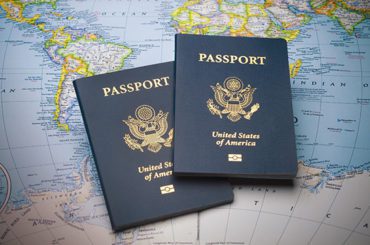Military veterans are a population that is particularly at risk for developing post-traumatic stress disorder, also known as PTSD.
In fact, the National Center for PTSD reports that as many as 20% of returning veterans from Operation Iraqi Freedom (OIF) and Operation Enduring Freedom (OEF) experience PTSD. What’s more, PTSD is a notoriously under-reported disorder among this population as well.
If you think you are one of the many military service veterans suffering from this debilitating disorder, it’s important to realize that you are not alone and that there is hope.
What Is PTSD?
Post-traumatic stress disorder is a psychiatric disorder that can result from witnessing or experiencing life-threatening or deeply distressing experiences, also known as trauma.
After a traumatic event like those that can be encountered in a combat zone, it’s natural for the body and mind to experience a variety of stress reactions like shock, confusion, and other intensely emotional responses.
Over time, these reactions generally subside and though the memory is not usually forgotten, the physical and mental stress reactions from the trauma will become less severe.
With PTSD, however, the sufferer of trauma experiences the initial stress reactions long after the incident occurred. It’s been likened to re-experiencing the event over and over again weeks, months, and sometimes years afterward.
Symptoms of PTSD can also appear long after the trauma was experienced. As such, veterans may return from a conflict zone without any obvious signs of PTSD for an extended period of time only to develop the disorder later in life. This latency period can be especially problematic and confusing for friends, family, and loved ones, not to mention the victims themselves.
What Does PTSD Look Like?
The first step of coping with and finding treatment options for your PTSD is identifying the disorder in the first place. As PTSD is a psychological disorder, some symptoms might be harder to pick out than others. Some individuals might even notice the signs but will be unwilling to admit they have a problem.
But just like with any problem, whether it be during active duty or in civilian life, the more you know about a situation, the better equipped you’ll be to handle it.
The U.S. Department of Veterans Affairs points out four types of PTSD symptoms: reliving the event, avoiding reminders of the event, experiencing negative changes in beliefs and feelings, and a state known as hyperarousal.
When most people think of the term “post-traumatic stress disorder” they’ll typically envision the first symptom: reliving the event. And while many people might think that people with PTSD simply have strong memories of a traumatic event, the truth is that it usually manifests much more realistically.
PTSD sufferers might have intense nightmares about the trauma or might experience what is called a “flashback,” vivid recollections so realistic that it feels like you are actually experiencing the trauma firsthand. These episodes may be accompanied by visual or auditory hallucinations that can make it even harder to tell what is real and what isn’t.
These flashbacks can be brought on by a variety of environmental details, from news reports or gunshots to simple objects or even smells. Such details that bring about flashbacks are known as “triggers.”
Another symptom of PTSD involves avoiding certain situations that may remind you of the specific trauma. This symptom relates directly to such triggers and can be different for everyone. It could be crowds, certain vehicles, a particular activity or location, or even a specific person. The key here is that an individual suffering from PTSD will go to great lengths to avoid interacting with anything that might make them remember details about the traumatic event.
Negative changes in beliefs and feelings are the third symptom of PTSD and is a bit vaguer than the last two. Beyond that, it can be hard to identify a shift in personality and beliefs if you are both the observer and the subject. As such, it might be beneficial to use the opinions of people you are close to in order to judge your situation a bit more objectively.
A few characteristics of this symptom may be that you feel like you are no longer capable of having positive feelings about others and maybe even your own family. You may also have a hard time trusting anyone, especially outside of a combat zone. Another aspect of the symptom may be that you cannot remember certain parts of the event or simply can’t bring yourself to talk about them.
The last symptom of PTSD is hyperarousal, a term that describes the state of being on constant high alert. This can manifest in anger and irritability, anxiety, trouble sleeping or concentrating, and an inability to feel safe in a situation (e.g. only being able to sit in a restaurant with your back against a wall). This hyperarousal may be similar to the feelings involved with being inside a combat zone.
If the above symptoms sound familiar, you may have post-traumatic stress disorder. If you are still unsure though, the U.S. Department of Veterans Affairs offers a self-assessment tool that can help you determine whether you are exhibiting signs of PTSD.
You should also seek the advice of a qualified medical professional for a definitive diagnosis and any additional treatment options you may require. Your treatment may also be covered by a variety of government programs created specifically to help veterans with PTSD.
For a list of therapists, assessment advice, and ways to see if you qualify for a military-service-based PTSD healthcare program, have a look at these resources from the National Center for PTSD from the Department of Veterans Affairs.
If you would like to talk to someone for more advice on assessing your PTSD symptoms, there are a variety of national helplines that can give you advice and help you find treatment options:
- The Veterans Combat Call Center – 1-877-WAR-VETS (1-877-927-3887)
- The Defense Centers of Excellence (DCoE) Outreach Center – 1-866-966-1020
Strategies to Help You Cope with Your PTSD
After identifying the symptoms of your PTSD and realizing that you may have a problem, the next step is learning ways to cope with your post-traumatic stress disorder.
While some sufferers of PTSD will see their symptoms diminish over time, other victims may experience the disorder’s effects for the rest of their lives.
As such, it’s important to develop the skills and strategies necessary to reduce the effects of PTSD and learn to live a happy and fulfilling life.
If you are currently having a hard time dealing with your symptoms of PTSD and feel like you might be a danger to yourself or to others, either call 911 or contact the help center below:
- The Veteran Crisis Line – 1-800-273-8255 and press “1”
Getting the Help You Need
Transitioning from military to civilian life can be hard for a veteran. Making the choice to get help for your post-traumatic stress disorder can be even harder. But, doing so is the first step towards overcoming the debilitating effects of PTSD.
Use the resources below to get help from qualified professionals.
- The National Center for PTSD
- The U.S. Department of Veterans Affairs
- The Veterans Combat Call Center – 1-877-WAR-VETS (1-877-927-3887)
- The Defense Centers of Excellence (DCoE) Outreach Center – 1-866-966-1020
The Veteran Crisis Line – 1-800-273-8255 and press “1”.




